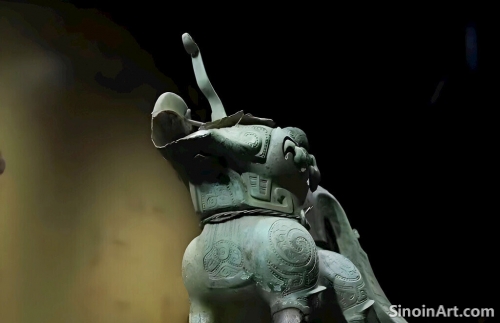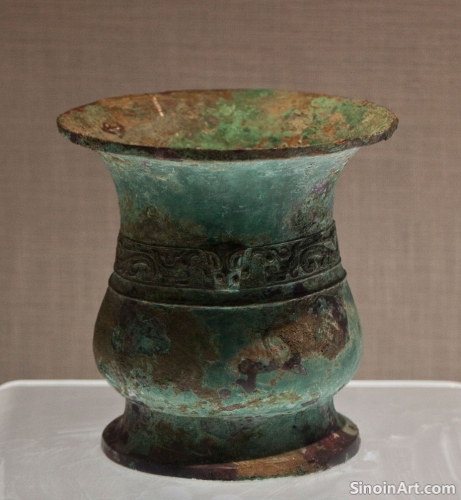The Use of Bronze in Ancient Chinese Public Works: Infrastructure, Irrigation, and City Planning
|
While not always a visible component, bronze played a significant role in the development of ancient Chinese public works projects, used to create tools, fittings, and components that were essential for the construction of infrastructure, irrigation systems, and city planning. The reliance on bronze helped to create lasting and sophisticated works of engineering. The use of bronze is an often overlooked element of ancient Chinese public works.  Bronze was used to create surveying instruments, which were crucial for the design and layout of cities, canals, roads, and other large-scale projects, helping to ensure that structures were laid out accurately. The use of bronze in surveying is a key component of their reliability and accuracy. These careful measurements were essential for the success of large scale construction.  Bronze was used in the construction of water management systems, including components for dams, canals, and water distribution networks, helping to ensure a consistent and reliable water supply. The use of bronze in these systems helped to ensure that they were both effective and reliable for generations.  Bronze tools were also essential in the construction of the large stone and earthen structures, and allowed the craftspeople to work with greater efficiency and accuracy. The use of these tools helped to facilitate larger scale projects and construction work. The creation of bronze tools was essential for the successful implementation of large scale public works. The study of bronze in these engineering projects helps to illuminate the technological and organizational skills of ancient Chinese society and their ability to use resources in order to create impressive feats of engineering. The large scale projects of this time highlight the importance of technological innovation. |
Tag : bronze public works, Chinese infrastructure, ancient technology, water management, city planning
Related information
- The Use of Bronze in Ancient Chinese Warfare: Fortification and Siege Technology
- The Discovery and Interpretation of New Bronze Ware Sites: Unveiling the Secrets of the Past
- The Enduring Appeal of Chinese Bronze Ware: Timeless Art and Cultural Legacy
- The Use of Bronze in Ancient Chinese Maritime Activities: Vessels and Tools
- Bronze Ware and Ancient Chinese Mythology: Exploring the Interplay Between Myth, Art, and Ritual
This article explores the use of bronze in ancient Chinese warfare beyond weapons and armor, highlighting its role in fortifications, the creation of siege engines, and demonstrating its importance in military strategy and defense.
This article explores the ongoing discovery and interpretation of new bronze ware sites in China, highlighting the importance of archaeological excavations, new technologies for analysis, and the way these new insights are reshaping our understanding of the past.
This article emphasizes the enduring appeal of Chinese bronze ware, highlighting its timeless beauty, its blend of function and symbolism, its ability to connect us with the ancient world, and the importance of continued study and preservation for future generations.
This article explores the use of bronze in ancient Chinese maritime activities, highlighting its role in ship construction, the creation of navigational and fishing tools, and its contribution to the development of trade and exploration.
This article explores the use of mythological imagery on Chinese bronze ware, highlighting the depiction of dragons, phoenixes, and other creatures, and how these motifs reflected ancient beliefs and helped to connect the earthly world with the spiritual realms.